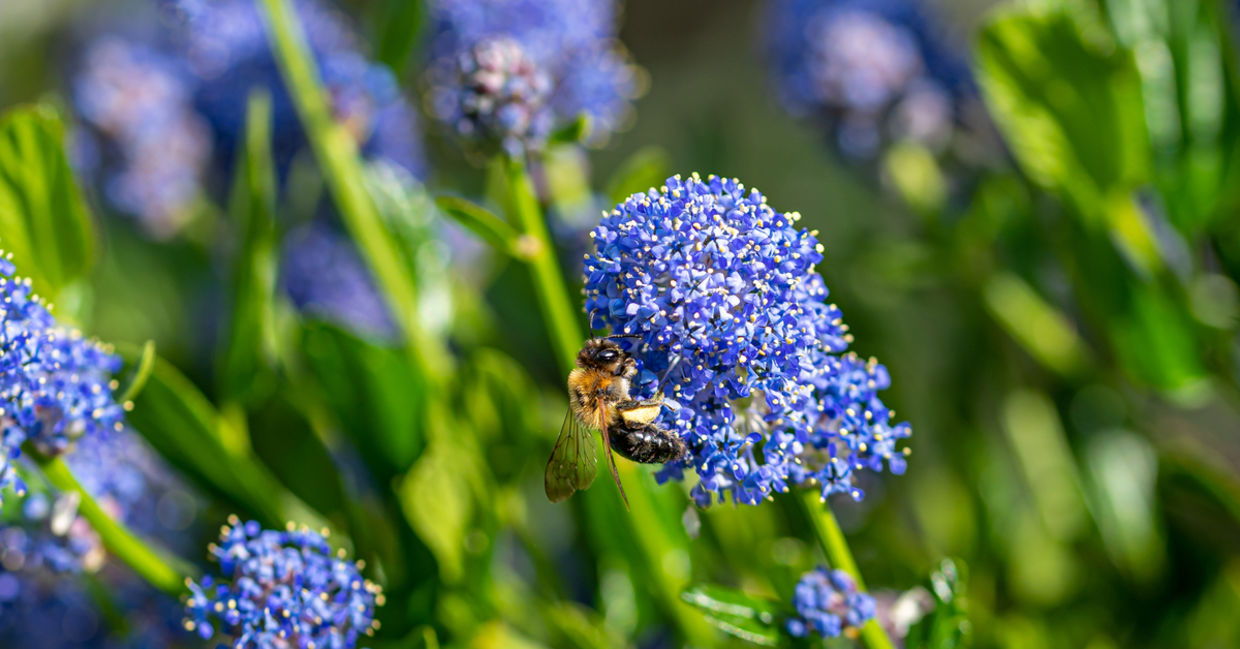
Andi111 / Shutterstock.com)
When you want to drive from one location to another, there are clearly marked roads that allow you to get where you are going. Roads have existed from ancient times. Could you imagine how difficult travel would be if we didn’t have them? Now, bees in England will soon have roads of their own so they can safely navigate.
That’s because without our intervention, 40-70 percent of our bees and other pollinators will become extinct, according to the nonprofit Buglife unless action is taken that will allow species to move easily through the landscape. Today, wildlife is contained in small patches of habitat that will now be linked by using B-lines.
The B-lines are part of an online map – a roadmap of sorts – that identifies routes that can be turned into pollinator highways. An initiative started by Buglife is looking to restore at least 150,000 hectares (370,658 acres) of habitat across the UK.
The organization said on its website: “B-Lines have been mapped across England, Wales, Northern Ireland, and large areas of Scotland. Along with conservation partners, land managers, businesses and local authorities, we are helping to fill the mapped areas with restored and new wildflower-rich areas.”
Planting wildflowers is really vital to the survival of the pollinators. According to Positive News, England alone has lost over 97 percent of its wildflowers since World War II and this loss of habitat has been catastrophic for species like bees, butterflies, and hoverflies.
“A complete England B-Lines network is a real landmark step in our mission to reverse insect declines and lend a helping hand to our struggling pollinators,” Catherine Jones, pollinator officer at Buglife told Positive News.
Buglife identified ways that people can help pollinators that include: growing more flowers, shrubs and trees; letting your garden go wild; cutting your grass more infrequently; leaving insect nests alone; and be careful to use pesticides that are safe for pollinators.
“Every action for pollinators, no matter how big or small, can contribute to the B-Lines network and a secure future for England’s pollinators,” according to the nonprofit. “We invite everyone to record their contributions on the B-Lines online map.”
The decline of pollinators is not unique to the UK. In 2019, a program in Minnesota paid homeowners to transform their lawns into bee-friendly habitats filled with wildflowers and clover. The state legislature voted to pay for 75 percent of the cost of the lawn conversions.
In 2017, an initiative called the Million Pollinator Garden Challenge that encouraged home gardeners and schools to rehabilitate ecosystems by cultivating pollinator-friendly habitats was so successful that there are now over a million gardens registered. Most of them are in the US but they are popping up in other countries too.
All of these efforts can help save our pollinators, our food supply, and make the world a much more beautiful space. Dedicate your window planters, lawns, and open spaces to help save the bugs and the bees.
YOU MAY ALSO LIKE:
How to Turn Your Yard Into an Oasis
Planting Wildflowers Could Save Honey Bees From Extinction
Morgan Freeman Turned His Ranch Into a Giant Bee Sanctuary







